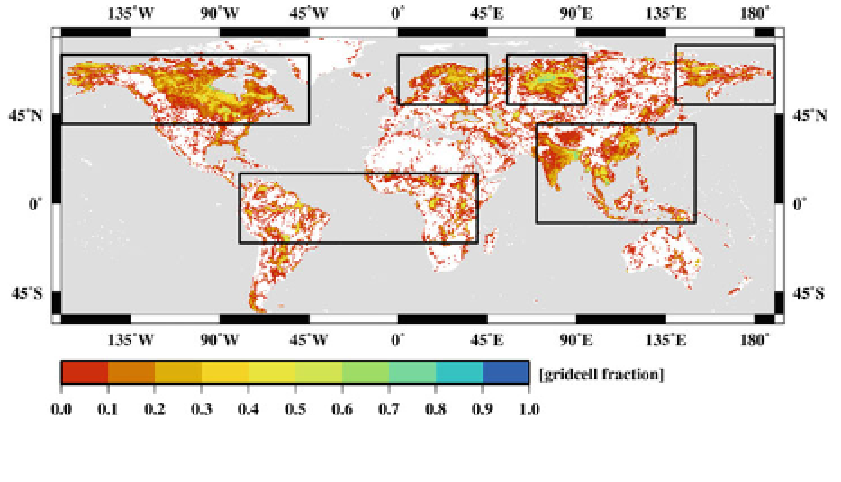Geoscience Reference
In-Depth Information
Fig. 9 Observed wetland fraction at 0.5 resolution obtained from the ensemble mean of four global
wetland data sets (see Stacke and Hagemann
2012
)
studies suspected wetlands to play an important role during the periods of climate change
(e.g., Ringeval et al.
2011
; Gedney et al.
2004
; Levin et al.
2000
). However, the repre-
sentation of the wetland's spatial extent and its temporal variations is still a weak point in
today's ESMs and needs to be improved by a better simulation of their hydrological cycle
(O'Connor et al.
2010
; Ringeval et al.
2010
).
However, even without consideration of the carbon cycle, the wetland hydrology in
itself is an important key factor in the climate system. Wetlands are often related to regions
with open surface water and saturated soil. Such regions have to be considered in ESMs
because of their potential feedbacks to the atmosphere (Coe and Bonan
1997
). The effect
of open water surfaces on the energy and water balance was investigated by several
modelling studies, e.g., Bonan (
1995
) and Mishra et al. (
2010
), who reported a significant
impact of wetlands on the local climate. Generally, they found a cooling of the surface in
wetland-dominated regions due to increased evapotranspiration, as well as an increase in
the latent heat flux and a decrease in the sensible heat flux. Eventually, this could result in
increased precipitation rates as shown by Coe and Bonan (
1997
) and Krinner et al. (
2012
).
Furthermore, wetlands interact in several ways with the hydrological cycle of their sur-
rounding area. Most studies report wetlands to regulate river flow, mitigate flood events
and recharge groundwater (Bullock and Acreman
2003
). These observations are consistent
with a modelling study by Mishra et al. (
2010
) who found decreased surface runoff in
wetland-dominated regions. However, the range of possible hydrological impacts of
wetlands is rather large and depends strongly on additional conditions such as topography
and soil properties. This is emphasized by several studies that describe different wetland
impacts such as an increased effect on flood peaks and no or a discharging impact on
groundwater (Bullock and Acreman
2003
). All of these processes are of great interest for
impact studies that investigate how climate change might affect the water storage capac-
ities in a region or the characteristics of river flooding.
The modelling of the hydrological cycle in wetlands and their extent dynamics has
motivated a large number of modelling studies. Generally, most models follow one of two

